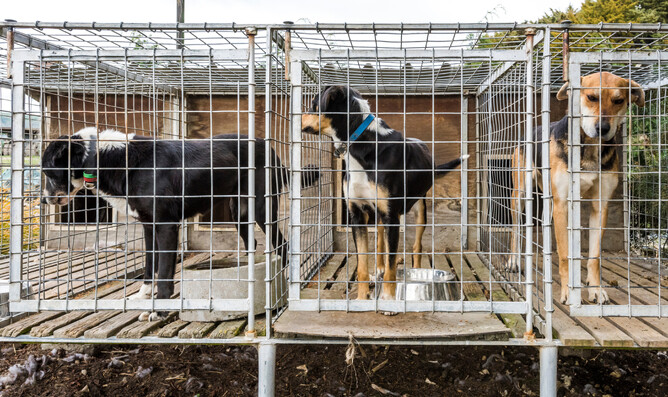With peak workloads easing as we head towards winter, this can be a good time to look into any health issues in your working dogs.
Flea numbers have been higher this summer. Check that your dogs and kennels are clear of fleas now, before they cause any further buildup of flea eggs and larvae in kennel floors and bedding.
Incidences of sheep measles are low on Southland farms. This indicates good disease control measures by our southern farmers, but they need to be maintained for ongoing protection. So, ensure you continue to implement your worming programme during autumn.
Lameness due to musculoskeletal injuries or osteoarthritis may be improved with accurate diagnosis, treatment and rest. Osteoarthritis, particularly in the stifle, hock, and carpal joints, makes the degenerative joint more prone to developing into septic arthritis after high summer workloads. If you suspect an issue, see your vet.
Toe infections are a common problem in working dogs – especially in cold, wet, dirty feet at this time of year. They can develop from trauma to the foot or nail bed, as bacteria gets into the injury from soil or animal faeces. Make sure that your kenneling has dry footing, and pay attention to long, overgrown toenails that are at risk of splitting or tearing. Early treatment of injuries and infections is best, as in bad cases amputation of a toe may be required. Toes and pads with poorly healing wounds, splits or ulcers may be helped with the application of a salve.
The bacteria introduced through foot trauma, small wounds to the skin, dental disease, etc. can spread via the blood stream to the heart, lungs, liver and kidneys. In a recent case, a working dog had failure of the heart valves and damage to other organs, due to a blood infection with a Streptococcus bacterium that is commonly found in cattle faeces.
Dental disease in working dogs is often the result of damage to the teeth from working with livestock, vehicle accidents, or just wear and tear from gnawing bones and other chewing behaviours. Veterinary investigations with dental radiographs can determine if any tooth extractions are needed to avoid infections, bone loss and pain.
Mammary gland tumours are relatively common in female working dogs because not many are spayed. Examine your dog’s mammary glands regularly, and talk to your vet if lumps are increasing in size or number.
Beware of autumn poisoning hazards such as the ingestion of rat bait or antifreeze (dogs will drink the sweet-tasting chemical that may be drained onto the ground when cleaning radiators and replenishing coolant for winter). Both of these poisonings require urgent veterinary advice and care.
Finally, watch out for poisonous mushrooms and toxic algae that dogs may find around the place at this time of year. They can cause neurological and gastrointestinal symptoms.

